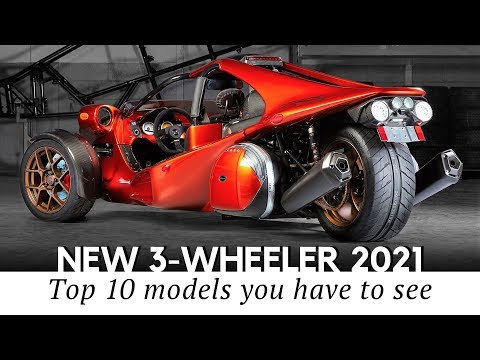Every Car Brand Ever Made: A Journey Through Automotive History and Innovation
Every Car Brand Ever Made: A Journey Through Automotive History and Innovation cars.truckstrend.com
The phrase "Every Car Brand Ever Made" conjures an image of an endless scroll, a colossal archive of human ingenuity, ambition, and the relentless pursuit of mobility. From the pioneering horseless carriages of the late 19th century to the sleek, software-defined electric vehicles of today, the automotive landscape is a dynamic tapestry woven with thousands of threads. While compiling an exhaustive, definitive list of every single marque that has ever existed – including countless short-lived, regional, or concept-only ventures – is a task beyond the scope of any single article, understanding the sheer breadth and evolution of car brands offers an unparalleled insight into technological progress, economic shifts, and the cultural impact of personal transportation. This comprehensive guide will navigate the vast and ever-changing world of automotive brands, exploring their origins, evolution, and what defines them in the modern era.
The Dawn of Automotive Innovation: Pioneering Brands (1880s-1920s)
Every Car Brand Ever Made: A Journey Through Automotive History and Innovation
The story of car brands begins with the inventors themselves. Karl Benz, with his Patent-Motorwagen in 1886, effectively created the first automobile, laying the groundwork for what would become Mercedes-Benz. Soon after, Gottlieb Daimler and Wilhelm Maybach founded Daimler Motoren Gesellschaft (DMG). Across the Channel, the Peugeot family transitioned from bicycles and coffee mills to cars, establishing one of the world’s oldest surviving automotive marques. Renault and Fiat emerged in Europe, while in the United States, visionaries like Henry Ford (Ford Motor Company), Ransom E. Olds (Oldsmobile), and Henry Leland (Cadillac) began to mechanize America.
These early brands faced immense challenges: rudimentary technology, a lack of infrastructure (roads, fuel stations), and public skepticism. Yet, they laid the foundation for an industry that would transform societies. Brands like Rolls-Royce, established in 1904, immediately targeted the luxury market, defining opulence and engineering excellence from the outset. The "how-to" of this era was pure invention, driven by trial and error, and the "considerations" were often just getting the vehicle to run reliably for more than a few miles. Many brands from this period disappeared as quickly as they emerged, unable to scale or adapt.
The Golden Age and Mass Production (1920s-1960s)
The interwar period and post-WWII boom ushered in the golden age of the automobile, characterized by mass production and increasing accessibility. Henry Ford’s assembly line revolutionized manufacturing, making cars affordable for the average family and cementing Ford as a global powerhouse. General Motors (GM), under Alfred P. Sloan, introduced a multi-brand strategy (Chevrolet, Pontiac, Oldsmobile, Buick, Cadillac), offering cars for every budget and lifestyle, becoming the world’s largest automaker for decades. Chrysler completed the "Big Three" in the U.S.
In Europe, Volkswagen emerged from post-war Germany with the iconic Beetle, designed as "the people’s car." Mercedes-Benz and BMW solidified their positions as luxury and performance leaders, while Ferrari and Porsche carved out niches in high-performance sports cars. Japan’s automotive industry began its quiet rise, with Toyota, Nissan, and Honda laying the groundwork for future global dominance by focusing on reliability and efficiency. This era saw brands categorize themselves more clearly: economy cars, family sedans, luxury cruisers, and sports cars. Challenges included economic depressions, world wars disrupting production, and later, the growing demand for fuel efficiency.
Global Expansion and Diversification (1960s-2000s)
The latter half of the 20th century witnessed unprecedented globalization and diversification. Japanese brands, lauded for their quality and fuel economy during the oil crises of the 1970s, expanded aggressively into Western markets, challenging established players. Hyundai and Kia from South Korea joined the global stage, initially competing on price and warranty, then steadily improving quality and design. Subaru carved out a unique identity with its all-wheel-drive systems.
This period was marked by intense competition, leading to significant brand consolidation through mergers and acquisitions. Daimler acquired Chrysler, Ford acquired Volvo and Land Rover, and GM acquired Saab and Hummer (among others). Brands focused on developing distinct identities through design, marketing, and technological differentiation (e.g., Volvo’s emphasis on safety, BMW’s "ultimate driving machine"). The primary "challenges" were environmental regulations, increasing safety standards, and navigating complex global supply chains. "Practical advice" for consumers increasingly involved comparing specifications, safety ratings, and long-term reliability.
The Modern Era: Electrification, Technology, and Niche Markets (2000s-Present)
The 21st century has brought the most radical transformation since the invention of the automobile itself. The rise of electric vehicles (EVs) has introduced a new wave of brands, with Tesla leading the charge and disrupting the industry with its focus on battery technology, software integration, and direct-to-consumer sales. New EV specialists like Rivian, Lucid, and Nio have emerged, challenging the dominance of traditional automakers.
Beyond electrification, the modern era is defined by connectivity, autonomous driving capabilities, and sustainable practices. Established brands are rapidly pivoting to EV platforms, creating electric sub-brands (e.g., Mercedes-EQ, BMW i). The Chinese automotive industry has exploded, with brands like BYD, Geely, and Chery not only dominating their domestic market but also making significant inroads globally, often leading in EV technology. At the extreme end, boutique hypercar manufacturers like Koenigsegg and Pagani continue to push the boundaries of performance and exclusivity.
"Tips" for today’s consumer include understanding charging infrastructure, software updates, and the long-term cost of ownership for EVs. "Challenges" for brands involve securing raw materials for batteries, managing complex software development, and navigating geopolitical trade tensions. The "solution" for many is constant innovation, strategic partnerships, and a clear brand narrative in a crowded market.
Understanding the Landscape: Types and Categories of Car Brands
While an exhaustive list of every brand ever made is impractical, understanding the types of car brands helps categorize the vast automotive world:
- Mass Market/Volume Brands: Focus on broad appeal, affordability, and reliability. Examples: Toyota, Honda, Volkswagen, Ford, Hyundai, Kia, Chevrolet, Nissan.
- Premium/Luxury Brands: Emphasize comfort, advanced technology, refined interiors, and status. Examples: Mercedes-Benz, BMW, Audi, Lexus, Cadillac, Genesis, Volvo.
- Performance/Sports Car Brands: Prioritize speed, handling, driving dynamics, and exclusivity. Examples: Porsche, Ferrari, Lamborghini, McLaren, Aston Martin, Lotus.
- Electric Vehicle (EV) Specialists: Brands founded specifically to produce electric vehicles, often with a tech-centric approach. Examples: Tesla, Rivian, Lucid, Nio, Polestar (initially Volvo sub-brand, now distinct).
- Niche/Boutique Brands: Produce highly specialized, low-volume vehicles, often handmade or custom-built. Examples: Koenigsegg, Pagani, Morgan, Caterham.
- Defunct/Historical Brands: Brands that no longer exist but contributed significantly to automotive history. Examples: Oldsmobile, Pontiac, Saab, Hummer, Plymouth, Packard.
Navigating the Brand Maze: Practical Advice for Consumers
Choosing a car today involves more than just picking a brand; it’s about aligning a brand’s ethos and offerings with your specific needs and values.
- Define Your Needs: What’s your budget? What’s the primary use (commute, family, off-road)? What features are essential (safety, technology, space)?
- Research Brand Reputation: Look into a brand’s history of reliability, safety ratings (e.g., NHTSA, IIHS, Euro NCAP), resale value, and customer service. Websites like Consumer Reports or JD Power provide valuable insights.
- Consider Long-Term Costs: Beyond the purchase price, factor in insurance, maintenance, fuel/charging costs, and potential depreciation. Some brands are known for higher parts and service costs.
- Test Drive Multiple Brands: The feel of a car can vary significantly between manufacturers. Don’t rely solely on reviews; experience the vehicle yourself.
- Explore Certified Pre-Owned (CPO) Options: Many premium brands offer CPO programs, providing peace of mind similar to a new car but at a lower price point.
- Understand Brand Lineage: Knowing a brand’s ownership (e.g., Audi is part of Volkswagen Group, Lexus is Toyota’s luxury division) can inform expectations about engineering, parts sharing, and reliability.
Challenges and Solutions in the Automotive Branding World
The journey of "every car brand ever made" is replete with challenges and ingenious solutions.
- Intense Competition: The sheer number of brands globally means constant pressure to innovate and differentiate. Solution: Focus on unique selling propositions (USPs) – be it technology, design, sustainability, or performance.
- Rapid Technological Change: The shift to EVs, autonomous driving, and connected services demands massive investment and quick adaptation. Solution: Strategic partnerships, significant R&D spending, and attracting top tech talent.
- Regulatory Pressures: Stricter emissions, safety, and data privacy regulations worldwide. Solution: Proactive engineering, investing in compliant technologies, and engaging with policymakers.
- Shifting Consumer Preferences: From car ownership to mobility services, from sedans to SUVs, and now to EVs, consumer tastes evolve rapidly. Solution: Agility in product development, diverse model lineups, and understanding demographic trends.
- Supply Chain Disruptions: Global events (pandemics, geopolitical conflicts) can severely impact production. Solution: Diversifying suppliers, localizing production, and building resilient supply chains.
Understanding the Automotive Brand Spectrum: A Categorical Overview
While listing "every car brand ever made" with specific prices is impossible (given thousands of defunct brands and the fluctuating values of collector cars), the table below provides a representative overview of existing car brand categories, their typical market positioning, and general price ranges for new vehicles.
| Brand Category | Examples | Typical New Price Range (USD) | Key Characteristics | Market Position |
|---|---|---|---|---|
| Entry-Level/Economy | Mitsubishi, Fiat (select models), Kia (entry) | $15,000 – $25,000 | Affordability, basic features, high fuel efficiency. | Budget-conscious, first-time buyers. |
| Mainstream/Volume | Toyota, Honda, Ford, Volkswagen, Hyundai, Nissan | $25,000 – $55,000 | Reliability, practicality, broad model range (sedans, SUVs, trucks). | Mass market, family vehicles, daily drivers. |
| Premium/Luxury | Mercedes-Benz, BMW, Audi, Lexus, Volvo, Genesis | $45,000 – $150,000+ | High-quality materials, advanced technology, comfort, prestige, performance options. | Affluent consumers, status-conscious buyers. |
| Performance/Sports | Porsche, Corvette, Alpine, Lotus, AMG, M | $60,000 – $300,000+ | Driving dynamics, powerful engines, athletic design, track capability. | Enthusiasts, performance-oriented buyers. |
| Electric Vehicle (EV) Specialist | Tesla, Rivian, Lucid, Nio, Polestar | $40,000 – $200,000+ | Cutting-edge EV tech, software integration, distinct design, often direct sales. | Early adopters, environmentally conscious, tech-savvy. |
| Ultra-Luxury/Hypercar | Ferrari, Lamborghini, McLaren, Rolls-Royce, Bentley, Koenigsegg, Pagani | $250,000 – $5,000,000+ | Exclusivity, bespoke craftsmanship, extreme performance, rare materials, limited production. | Ultra-high-net-worth individuals, collectors. |
Conclusion
The concept of "Every Car Brand Ever Made" is a monumental testament to human innovation and an ongoing narrative of technological advancement. While the precise number is elusive and constantly changing, the journey through automotive history reveals a fascinating evolution from rudimentary machines to sophisticated, interconnected vehicles. Each brand, whether a global titan or a fleeting footnote, has contributed to this rich tapestry, pushing boundaries, shaping cultures, and ultimately, defining how we move. As the industry continues its rapid transformation towards electrification and autonomy, the story of car brands remains vibrant, promising new chapters of innovation and a continued legacy of mobility for generations to come.
Frequently Asked Questions (FAQ)
Q1: How many car brands have ever existed?
A1: It’s impossible to give an exact number, but estimates range from several thousand to tens of thousands. Many were short-lived, regional, or produced only a handful of vehicles. The vast majority no longer exist.
Q2: What was the first car brand?
A2: While not a "brand" in the modern sense, Karl Benz’s Benz Patent-Motorwagen from 1886 is widely considered the first automobile, leading to the eventual formation of companies that would become part of Mercedes-Benz.
Q3: Are there any car brands that have been around since the very beginning?
A3: Very few have had continuous production under the same name. Peugeot (founded 1810, making cars since 1891), Mercedes-Benz (lineage from Benz and Daimler), Renault (1899), and Fiat (1899) are among the oldest continuously operating car manufacturers. Ford (1903) is also one of the oldest and most influential.
Q4: Why do some car brands disappear?
A4: Brands disappear for various reasons, including financial troubles, inability to adapt to market changes (e.g., shifting consumer tastes, new regulations), intense competition, mergers and acquisitions where a brand is dissolved or absorbed, or simply lack of innovation.
Q5: What are some of the newest car brands?
A5: Many new car brands emerging today are focused on electric vehicles. Examples include Rivian, Lucid Motors, Nio, Xpeng, and BYD (though BYD has been around for a while, its global automotive presence is newer). New brands also occasionally emerge from established manufacturers, like Genesis (Hyundai’s luxury brand) or Polestar (Volvo’s performance EV brand).
Q6: Is it possible to buy a car from a defunct brand?
A6: Yes, absolutely! Many defunct brands have passionate followings and their vehicles are available on the used car market, at auctions, or through classic car dealerships. Owning a car from a defunct brand can offer a unique piece of automotive history, though parts and specialized maintenance might be more challenging to find.








